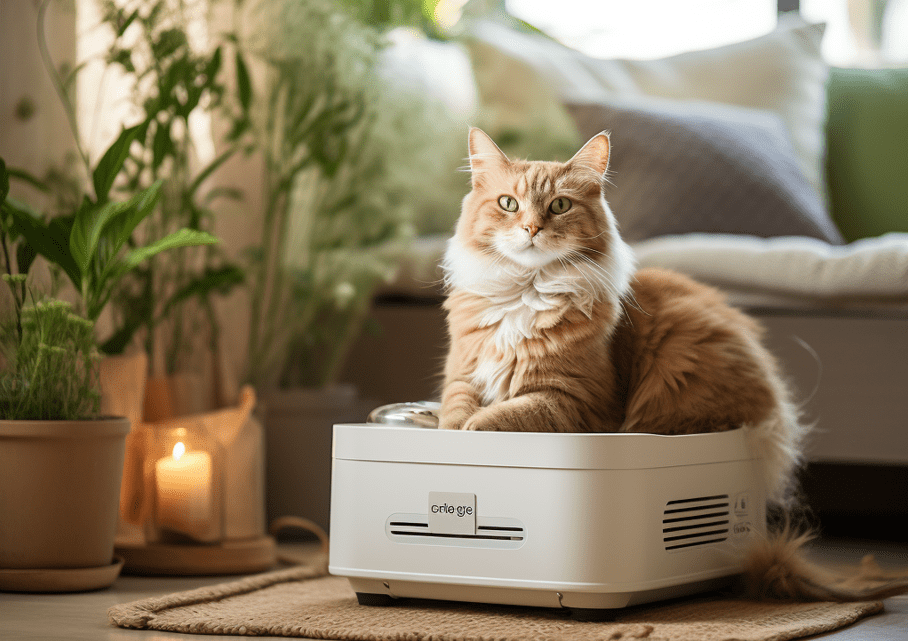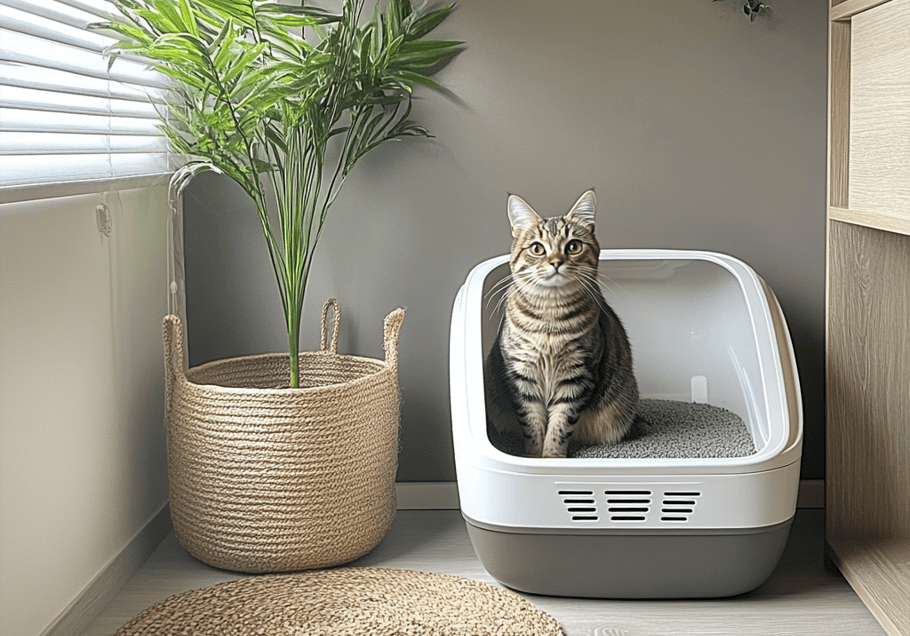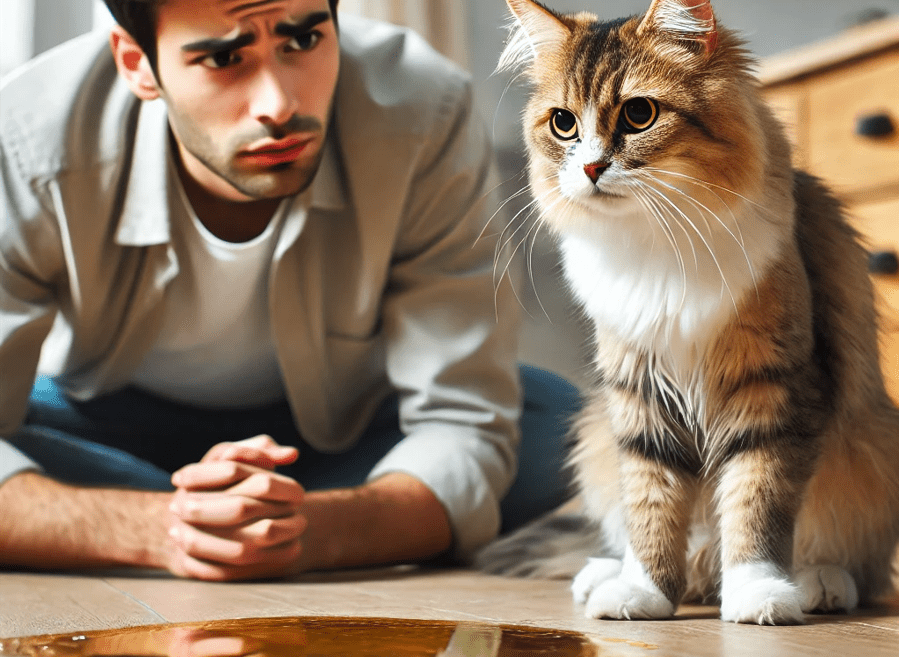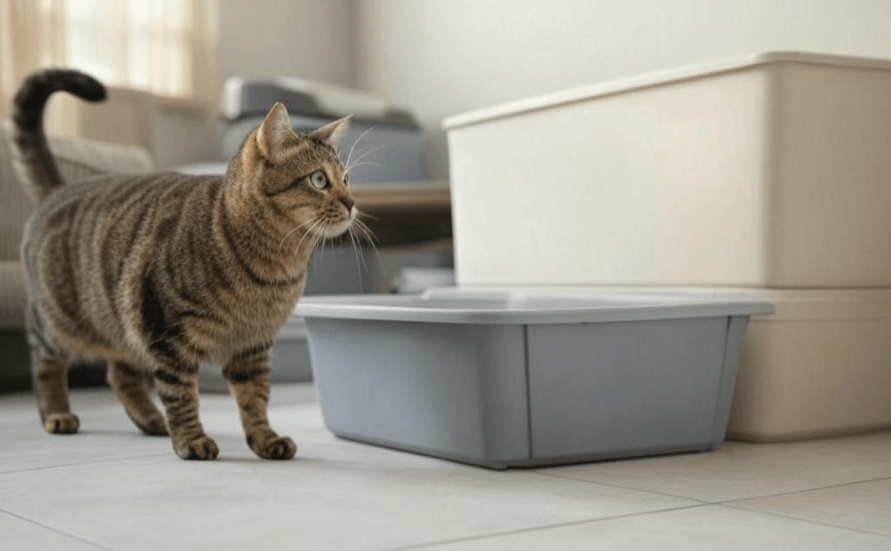
If you’ve ever walked into a room only to be greeted by the unmistakable scent of cat spray, you know how frustrating it can be. Spraying is a common issue among cats, especially those who are unneutered, stressed, or marking their territory. While behavioral and medical solutions are essential, the right litter box can make a huge difference. Are high-sided litter boxes better for sprayers? The short answer is yes—but there’s much more to consider.
In this comprehensive guide, we’ll explore why high-sided litter boxes can help contain spray, what features to look for, and how to address the root causes of spraying. With vet-approved advice and practical tips, you’ll learn how to create a cleaner, more comfortable environment for both you and your feline friend.
What This Article Covers
Spraying Behavior: It’s not just a nuisance—it stems from instinct, stress, or health issues.
High-Sided Litter Box: Helps contain the mess but is only part of the solution.
Science Behind Spraying: We’ll explore why cats spray and how high walls prevent overspray.
Key Contributing Factors: Box size, placement, and cleaning routines impact success.
Alternative Solutions: Options for persistent sprayers beyond just litter box adjustments.
Expert Recommendations: Proven litter box setups to reduce spraying.
Action Plan: Clear steps to minimize spraying and maintain a fresh home.
Why Do Cats Spray? Understanding the Behavior
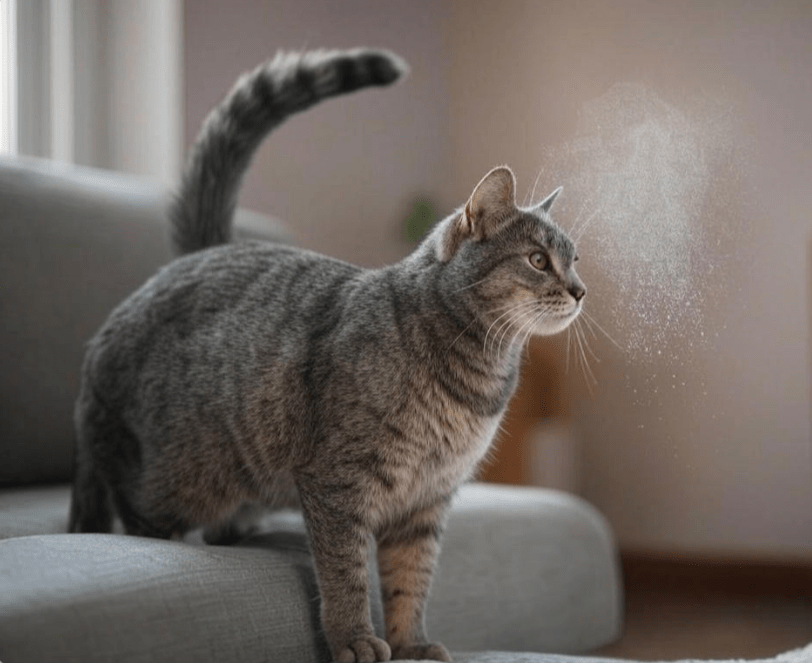
Before discussing litter box solutions, it’s crucial to understand why cats spray. Unlike regular urination, spraying involves a cat backing up to a vertical surface, lifting their tail, and releasing a small amount of urine. This behavior is often linked to:
Territorial Marking – Unneutered males and even some females spray to claim their space.
Stress or Anxiety – Changes in routine, new pets, or unfamiliar scents can trigger spraying.
Medical Issues – Urinary tract infections (UTIs) or bladder stones may cause inappropriate elimination.
Since spraying is a natural instinct, punishment won’t work. Instead, modifying the environment—starting with the right litter box—can help redirect this behavior.
How High-Sided Litter Boxes Help with Spraying
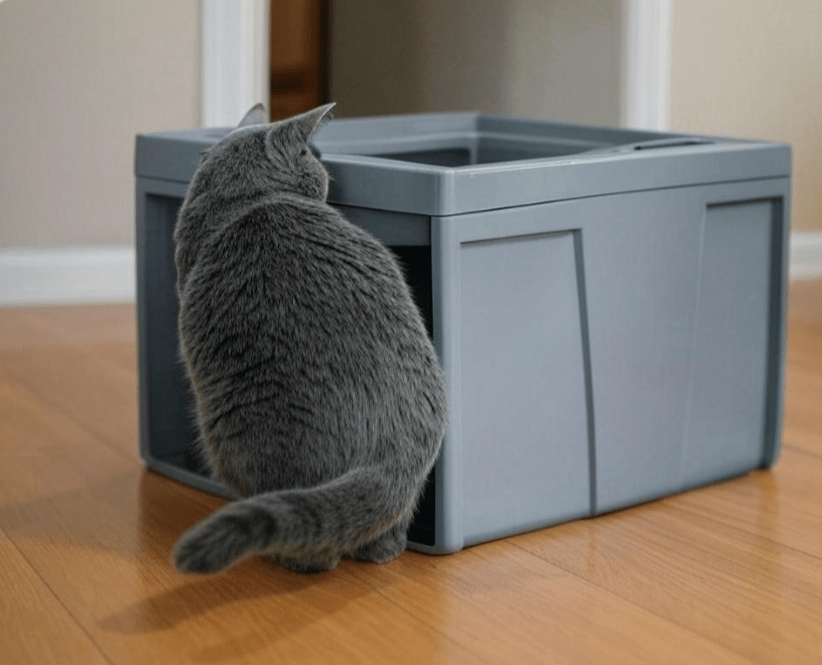
Spraying—when a cat urinates outside the litter box, often on walls or floors—can be a messy and frustrating issue for pet owners. Standard litter boxes with low walls may not contain a cat’s natural urine spray, especially in males or anxious cats who lift their tails while urinating. High-sided litter boxes (typically 12-16 inches tall) provide a simple yet effective solution by blocking overspray, offering privacy, and reducing odor spread. These boxes are designed with taller walls to keep urine inside, while features like wide entry points and durable, easy-to-clean materials ensure comfort for cats of all ages. For cats that still prefer some coverage, optional hooded designs can add extra security. By choosing the right high-sided litter box, pet owners can minimize messes and create a more hygienic, stress-free environment for their feline companions.
Other Essential Features of a Sprayer-Friendly Litter Box
A well-designed litter box encourages consistent use and minimizes spraying. Here are the key factors to consider:
Size Matters: Ensuring Ample Space
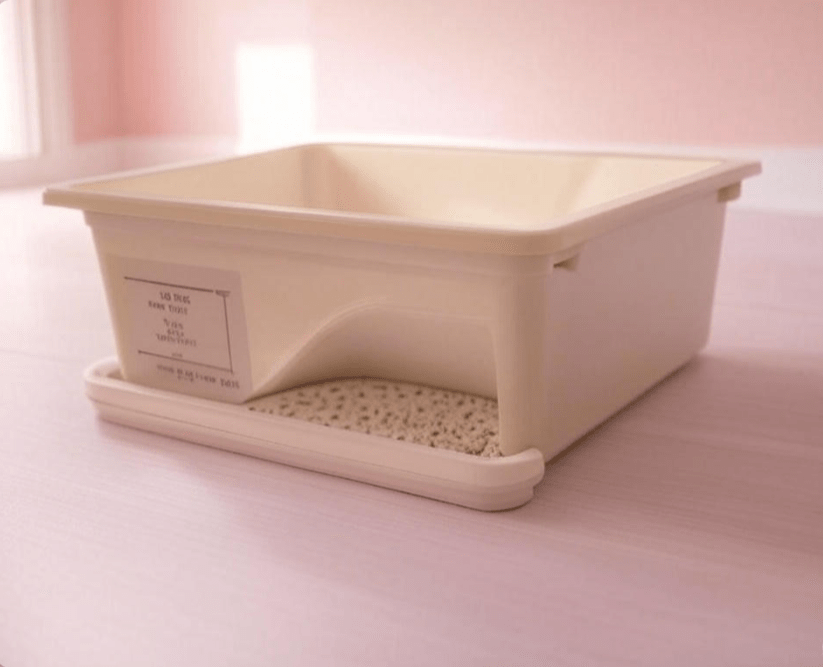
The litter box should be at least 1.5 times your cat’s length (nose to tail base) to allow comfortable movement. Larger breeds, such as Maine Coons, may require an extra-large box or even a storage bin. High sides help contain spray, but a lower front entry makes it easier for older or arthritic cats to step in.
Location & Number of Boxes: Reducing Stress
Place litter boxes in quiet, low-traffic areas to avoid startling the cat. In multi-cat households, provide one box per cat plus an extra, spread across different locations to prevent territorial disputes. Avoid placing boxes near food or water, as cats instinctively avoid eliminating near their eating areas.
Litter Type & Depth: Catering to Preferences
Unscented, clumping litter is usually best, as strong scents may deter use. Maintain a depth of 2–3 inches for proper digging and covering. Avoid plastic liners or deodorizing additives, which some cats find unpleasant. Texture preferences vary, so observe your cat’s habits and adjust accordingly.
Cleanliness: Maintaining a Fresh Environment
Daily scooping is essential to prevent odor buildup, and a weekly deep clean with mild soap or enzymatic cleaners helps keep the box inviting. Avoid harsh chemicals like bleach, as residual smells may discourage use. If urine frequently sprays outside the box, clean those areas thoroughly to prevent repeat marking. Replace old boxes every 6–12 months if odors persist.
When a High-Sided Litter Box Isn’t Enough
If your cat continues to spray even with a high-sided litter box, the issue may require a deeper look into behavioral, medical, or environmental factors. Spraying, which is different from typical urination, is often a cat’s way of marking territory or reacting to stress. One of the most effective solutions is neutering or spaying, especially for male cats, as this reduces spraying in approximately 90% of cases. Additionally, synthetic pheromone products like Feliway diffusers can help ease anxiety, making your cat feel more secure and less inclined to mark its surroundings.
However, if behavioral adjustments don’t resolve the problem, a veterinary checkup is essential. Underlying health issues such as urinary tract infections, diabetes, or kidney disease can cause discomfort and lead to spraying. A thorough examination will rule out or address any medical conditions that might be contributing to the behavior.
Real-Life Success Story: How a High-Sided Box Solved Max’s Spraying Problem
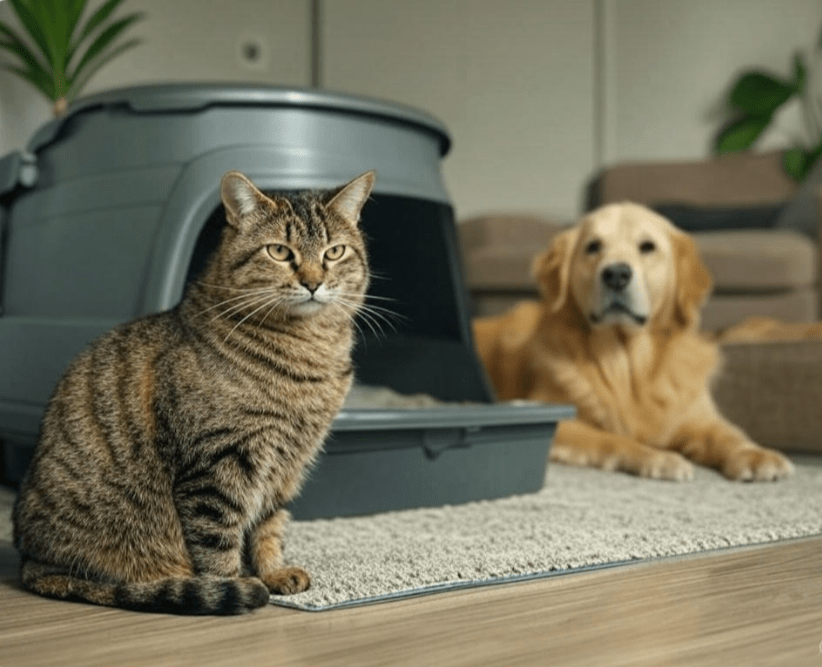
Max, a 3-year-old tabby, started spraying after a new dog joined the family. His owner, Sarah, tried everything—cleaning sprays, pheromone diffusers, even rearranging furniture. Nothing worked until she switched to a high-sided litter box with a privacy hood. The tall walls contained Max’s spray, and the enclosed design made him feel safer. Combined with gradual introductions to the dog, Max’s spraying reduced significantly within weeks.
Are High-Sided Litter Boxes the Best Choice for Sprayers?
For most sprayers, high-sided litter boxes are a highly effective solution. They minimize mess, contain odors, and provide security. However, they should be part of a broader strategy that includes:
1.Addressing underlying stress or health issues.
2.Maintaining a clean, accessible litter environment.
3.Using positive reinforcement instead of punishment.
If your cat is still struggling, consult a vet or feline behaviorist for personalized advice.
Conclusion
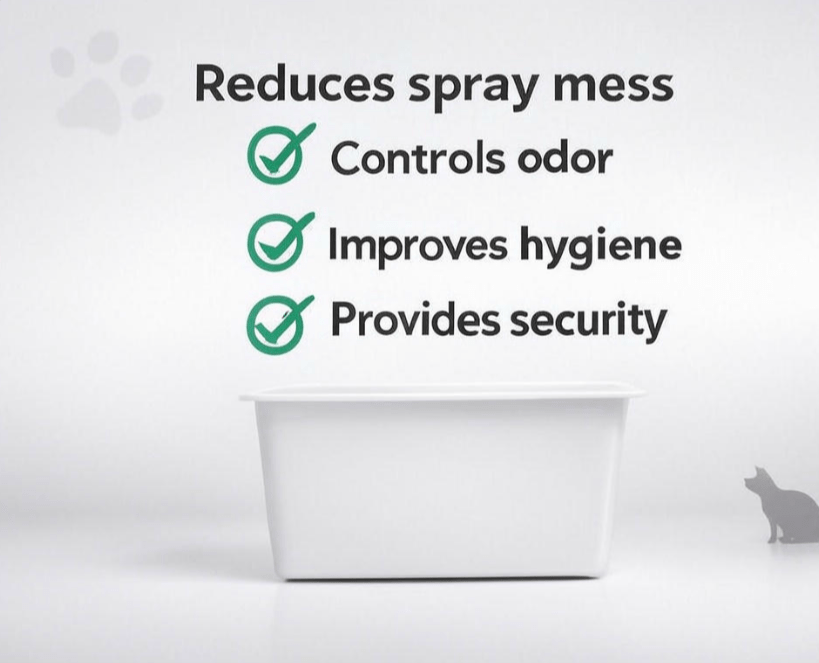
Dealing with a spraying cat can be challenging, but the right litter box makes a world of difference. High-sided litter boxes are better for sprayers because they contain urine, reduce odors, and offer a sense of security. Combine this with proper placement, cleanliness, and stress reduction techniques, and you’ll be well on your way to a spray-free home.

